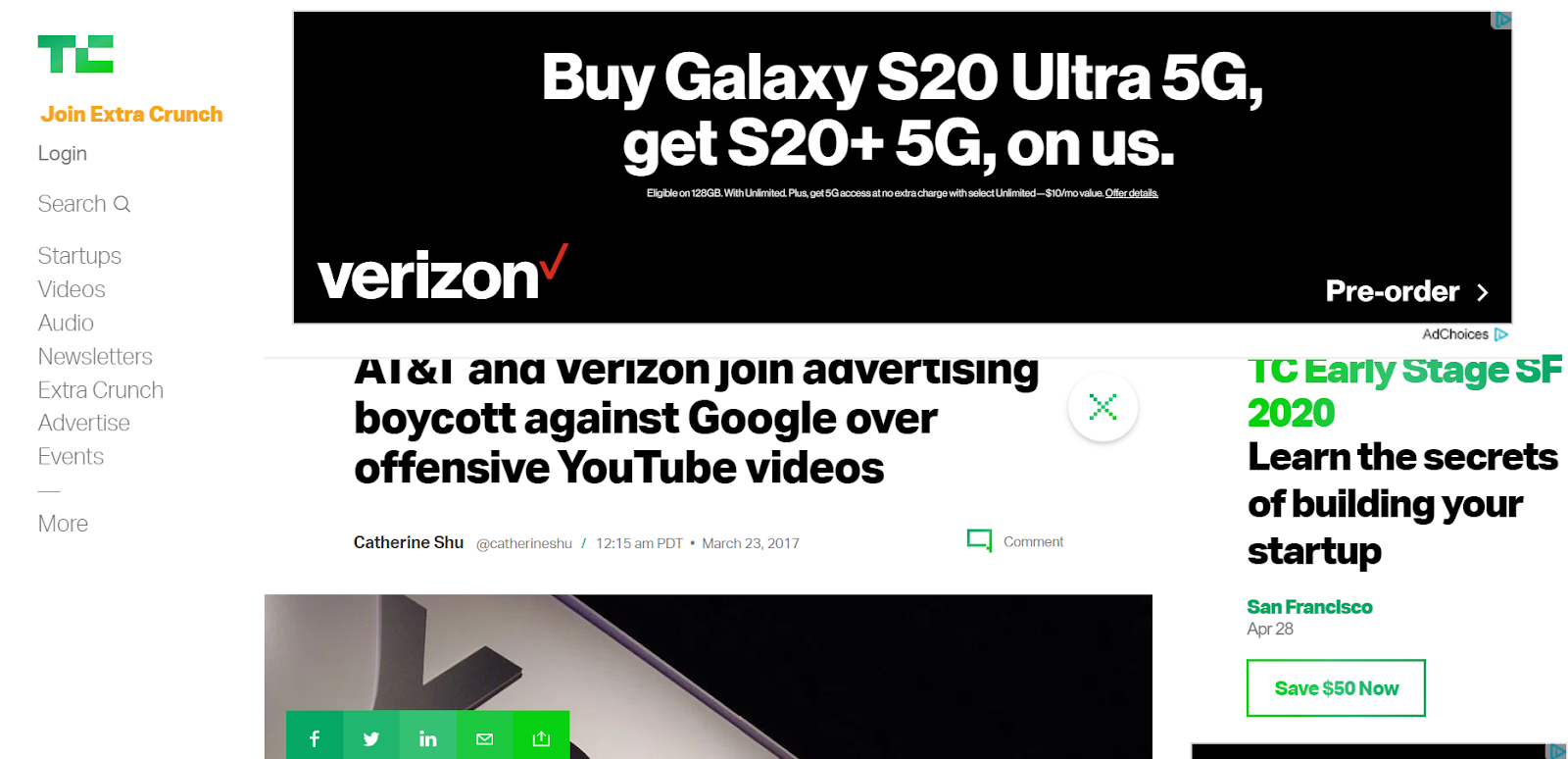Contextual advertising requires placing ads on site pages relevant to their content — for example, promoting kitchen utensils on a cooking blog. Google AdSense allows the owners of news sites, blogs, and entertainment resources to earn money by placing advertising banners on the site.
How does contextual advertising work?
Contextual advertising is an intermediary between webmasters (a.k.a. site owners) and advertisers who want to place their banners. Webmasters earn money after users click on an ad placed on their site. The cost per click on ads varies from a few cents to hundreds of dollars. It depends on a publisher, keyword competition, search volume, ad quality, and the maximum bid an advertiser can pay per click.
The advertising network displays ads based on the page content. You need to tell Google AdSense what your ad is about by choosing the necessary topic and keywords. If they match the main topic of the publisher’s page, they can place this ad. Google will also analyze page text and structure, language, and keywords to select the most relevant page for an ad. After this analysis, Google AdSense finds a page that is the perfect match for your advertising.
There are several types of contextual advertising predetermined by platforms where you want to place your banners. These include in-video ads, in-game ads, and display ads.
Contextual advertising is often mistakenly confused with behavioral advertising. Let’s find out the difference.
Contextual Advertising vs. Behavioral Advertising
The difference between these two major advertising techniques lies in what they target. Behavioral advertising implies targeting user behavior, while contextual advertising focuses on context.
Advertisers need to find pages relevant to their contextual advertising offers. It means that their banner should look natural for a user in this or that environment. For example, a banner ad promoting running shoes on a fitness blog and an ad offering users to buy reading glasses on a book blog is a perfect choice.
Behavioral advertising implies targeting users who have previously interacted with this or that site. For example, if users view items, add them to their shopping cart, or read articles on a blog, they can then meet personalized offers on other sites encouraging them to go back to the site and make a purchase.
Compared to behavioral advertising, contextual advertising has several benefits that include the following ones.
- Easy setup. With contextual advertising, you don’t need to collect, store, and analyze lots of customer data, which is the core of behavioral ads.
- No customer privacy policy issues. Behavioral advertising requires tracking pixels and collecting cookies, which GDPR regulates. Since cookies are considered users’ personal data, you should inform them how you will collect and use them further. Hence, in terms of privacy, contextual advertising is much easier to run.
- Stalking-free web surfing. Behavioral advertising makes users feel attacked. Navigating a company’s site doesn’t mean they want to buy from it since they could just compare prices or look for more information. Contextual advertising won’t make users feel stalked because banners are naturally knitted into the content of a page they read.
Now that you know how contextual advertising works and are aware of its benefits compared to behavioral ads, let’s check out some examples.
Contextual Advertising Examples
New York Times uses different contextual ads depending on the site section. They placed an ad offering publishing services in their “Books” section.

The next advertiser is Verizon. They promote their new Samsung phone on TechCrunch, an online newspaper about high tech and startup companies.

Congrats, now you know how contextual advertising works, understand its benefits over behavioral advertising, and have some examples at hand. It’s time to create your own ad!
References
- This article provides a guide to contextual advertising.
- This article explains step by step how to set up a contextual advertising campaign with Google AdSense.
Last Updated: 22.03.2023

or